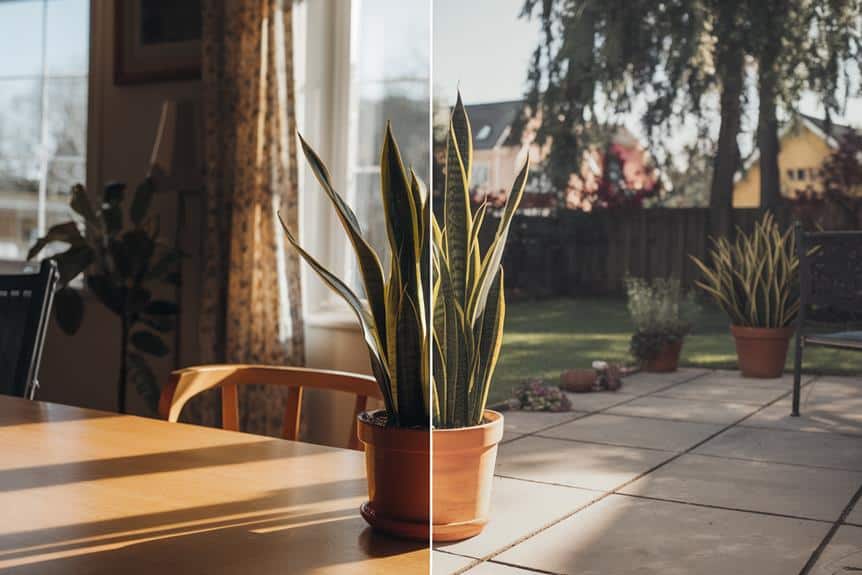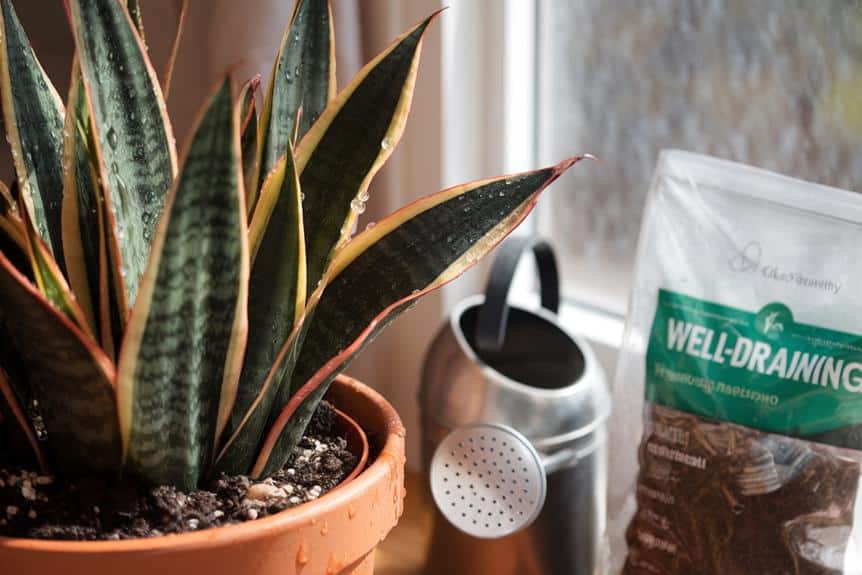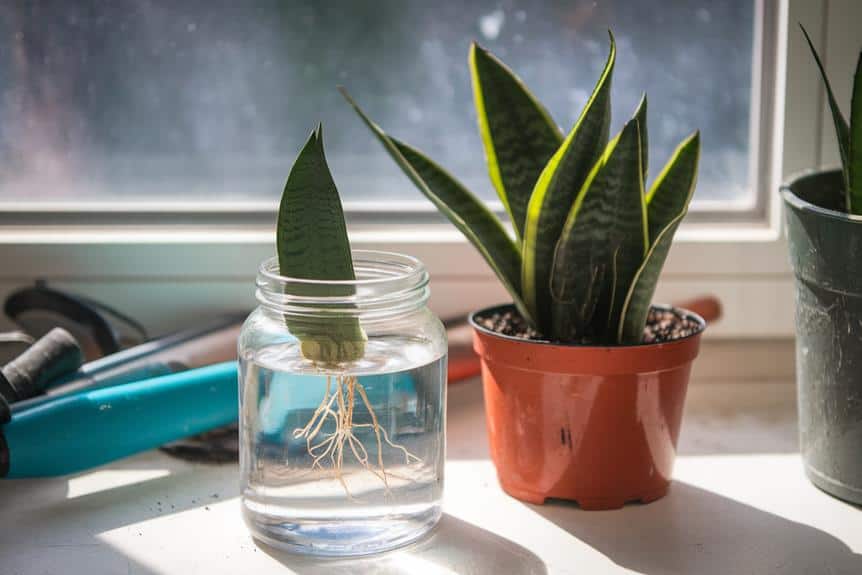Snake Plant Care Guide: Indoors and Outdoors
The snake plant, with its unique upright leaves, is a perfect addition to any home or garden space. These hardy plants are known for being low-maintenance and resilient. This guide covers the key elements for successfully growing snake plants, including light, water, soil, temperature, humidity, propagation techniques, and common pest and disease issues. Follow these tips to ensure your snake plants thrive, adding natural beauty to your indoor or outdoor areas.
Contents
Light Requirements

Snake plants typically thrive in a wide range of light conditions, making them incredibly versatile houseplants. You’ll find they adapt well to both low and bright indirect light, perfect for various indoor spaces. While they can tolerate some direct sunlight, it’s best to avoid prolonged exposure, especially during hot afternoons, which may scorch their leaves.
For favorable growth, place your snake plant in a spot with moderate to bright indirect light. If you’re growing it outdoors, choose a partially shaded area. In low light conditions, your snake plant will survive but may grow slower and produce less vibrant foliage. To guarantee even growth, rotate the pot every few weeks, allowing all sides to receive equal light. By understanding and meeting your snake plant’s light requirements, you’ll help it thrive and purify the air in your space.
Watering and Soil Conditions

Moderation is key when it comes to watering your snake plant. These resilient plants prefer to dry out between waterings, so you’ll only need to water them every 2-3 weeks during the growing season and even less frequently in winter. Overwatering can lead to root rot, so it’s better to err on the side of underwatering.
For optimal growth, use a well-draining potting mix. A blend of regular potting soil with sand or perlite works well. This guarantees proper drainage and prevents water from pooling around the roots. When planting outdoors, choose a location with sandy, well-draining soil. If your garden soil is heavy clay, consider amending it with sand or gravel. Remember to always check the soil moisture before watering by inserting your finger about an inch into the soil. If it feels dry, it’s time to water.
Temperature and Humidity

Adaptability is one of the snake plant’s greatest strengths when it comes to temperature and humidity. You’ll find these plants thrive in a wide range of conditions, making them perfect for both indoor and outdoor environments. Keep your snake plant in temperatures between 60°F and 80°F to guarantee optimal growth. They can tolerate brief periods of colder temperatures, but prolonged exposure below 50°F may cause damage.
As for humidity, snake plants aren’t fussy. They’ll do well in average household humidity levels, typically between 30% and 50%. If you live in an arid climate, you don’t need to worry about increasing humidity. However, in extremely humid environments, maintain good air circulation to prevent fungal issues. When caring for snake plants outdoors, protect them from frost and extreme heat to preserve their health and appearance.
Propagation Methods

Expanding your snake plant collection is easy with several reliable propagation methods. You can propagate snake plants through leaf cuttings, division, or offsets. For leaf cuttings, cut a healthy leaf into 2-3 inch sections and plant them in well-draining soil. Keep the soil moist and wait for new growth to emerge. Division involves carefully separating the plant at the roots, ensuring each section has healthy roots and leaves. Replant the divisions in separate pots. Offsets, or pups, grow naturally from the parent plant’s base. Gently remove these with roots intact and pot them individually. Whichever method you choose, be patient as snake plants grow slowly. Propagation allows you to share these air-purifying plants with friends or expand your indoor garden. By mastering these techniques, you’ll be able to multiply your snake plant collection effortlessly.
Common Pests and Diseases
While snake plants are generally hardy, they can still fall prey to certain pests and diseases. You’ll want to watch out for mealybugs, spider mites, and fungus gnats. These pests can cause leaf damage and stunted growth. Regularly inspect your plant’s leaves and soil for signs of infestation.
Root rot is a common disease that affects overwatered snake plants. To prevent this, guarantee proper drainage and avoid waterlogging. If you notice soft, mushy roots or a foul odor, you may need to trim affected parts and repot the plant.
Leaf spot diseases can also occur, causing brown or yellow spots on leaves. Remove affected leaves and improve air circulation to combat this issue. By staying vigilant and addressing problems early, you’ll help your snake plant thrive and continue to purify the air in your space.
